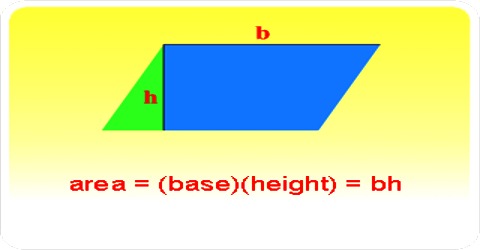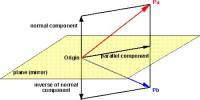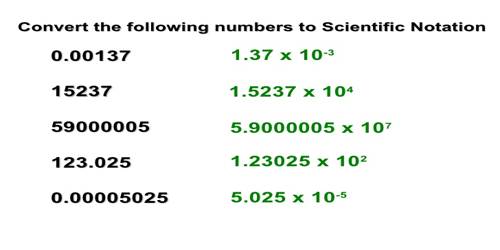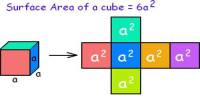Calculating the Area of a Parallelogram
The area of a parallelogram can be found by multiplying the base times the height. It means the number of square units it takes to completely fill a parallelogram.
Formula: Base × Altitude
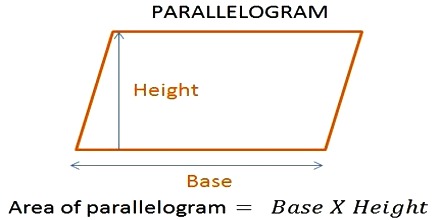
If a parallelogram has a base of length 6 inches and a height of 4 inches, its area is 6×4=24 square inches.
A parallelogram is a 4-sided shape formed by two pairs of parallel lines. Opposite sides are equal in length and opposite angles are equal in measure. To find the area of a parallelogram, multiply the base by the height. The formula is:
A = b × h
where, b is the base; and h is height.
Example:
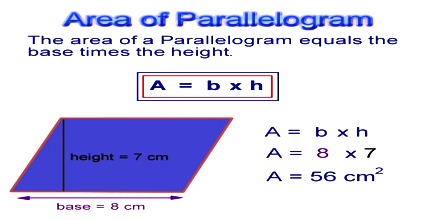
Find the area of a parallelogram with a base of 8 centimeters and a height of 7 centimeters.
Solution: A = b × h
A = (8 cm) × (7 cm) = 56 cm2.
